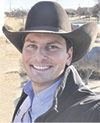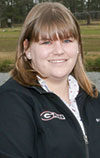Amid many challenges of 2020, with COVID-19, lockdowns and disruption of supply chains, our livestock still have to eat, and our farmers did not stop working. Good hay is key for many livestock operations in the Southeast, either as a main forage source in the winter or to close the gap between the dormancy of warm-season grasses and the first grazing on cool-season annuals. No matter which scenario, good-quality hay saves money and ensures reliable animal performance.
The Southeastern Hay Contest (SEHC) has been encouraging producers to test their hay for the past 16 years, and no different from before, we had superb participation in 2020. Even with lockdowns and limited mobility for our extension agents, the SEHC had 370 entries submitted, just shy of last year’s record of 380.
Beyond that, we increased our reach and had more states submitting samples to the contest than ever before. This is a great achievement for such a challenging year, and we are very proud of our producers and extension agents, who were still engaged on proving their hay is the best, even with COVID-19. The pandemic has also disrupted our traditional award ceremony at the Sunbelt Agricultural Exposition in Moultrie, Georgia. Winners this year were presented at the American Forage and Grassland Council annual conference in Savannah, Georgia, on Jan 5, 2021.
Producers can enter the SEHC in seven categories of hay and baleage: warm-season perennial grass hay (bermudagrass, bahiagrass), alfalfa hay, perennial peanut hay, perennial cool-season grass (tall fescue, orchardgrass, etc.) hay, mixed and annual grass hay, grass baleage and legume baleage.
The samples are ranked based on relative forage quality (RFQ), and the top 3 entries in each category receive a cash prize. The overall winner also receives a choice of the use of a new Massey Ferguson DM Series disc mower or RK Series rotary rake for the 2021 hay production season, plus $1,000 in cash. This year’s winners are presented in Table 1 below. Our special congratulations for Brian Johnson of McKenney, Virginia, for the top RFQ of 268 with an alfalfa hay sample.
Click here or on the table above to view it at full size in a new window.
The SEHC is possible because of the effort of our extension agents, who engage producers and collect samples, and because of our sponsors, who support each of the categories. This year, we received samples from Georgia, Florida, Virginia, North Carolina, South Carolina, Mississippi, Alabama, Arkansas and Tennessee. We are still missing a few states in the Southeast, and that is the challenge for the 2021 Southeastern Hay Contest: to have least one sample from each of the 13 states. Be the first or keep the tradition, prove your hay is the best! Submissions are open year-round, check the Southeastern Hay Contest website for more information, or contact your local forage extension specialist.
What is relative forage quality? RFQ is an index used to represent different forages relative to their overall nutritive value (total digestible nutrients) and predicted dry matter intake. The index was developed by the University of Florida and the University of Wisconsin and is considered a better fit for comparing forages (especially Southern forages) for accounting for the digestible fiber as determinant of intake.
In the past, hay quality prediction equations were based on the fiber concentration of the hay crop. However, forage crops can have similar fiber content but have very different digestibility. For instance, Tifton 85 bermudagrass often has a higher fiber concentration than other bermudagrass varieties, yet it is more digestible.
This improved digestibility results in enhanced animal performance but is not reflected just considering traditional forage nutritive value parameters. This value is a single, easy-to-interpret number that improves producer understanding of a forage’s nutritive quality and helps in establishing a fair market value for the product.
Since 2003, hundreds of warm-season samples have been used to refine the RFQ equation for bermudagrass and other warm-season forages at the University of Georgia’s Feed and Environmental Water Lab in Athens, the official SEHC laboratory.
How can relative forage quality help me? RFQ allows hay producers to easily categorize and price hay lots based on relative quality and livestock producers to balance supplemental diet based on the quality of the hay being offered. Producers can purchase hay lots depending on its end use. For example, there is little need to feed high-quality hay to livestock that could easily utilize poorer-quality forage.
Hay with a RFQ of 100 or more can usually be economically fed to maintain beef cows, while hay with an RFQ of 125-150 is adequate for stocker cattle or young growing replacement heifers, and hay with an RFQ of 140-160 is suitable for dairy cattle in the first three months of lactation. It is also easy to see that relative forage quality could provide the framework for a quality-hay marketing system.
For instance, hay with a RFQ of 155 could conceptually be labeled “premium” hay, while hay with an RFQ of 100 could be labeled “fair.” This simple system could allow producers to price hay consistently and fairly across harvest maturity, fertilization regimes or plant species (i.e., bermudagrass, bahiagrass, perennial peanut or tall fescue).














